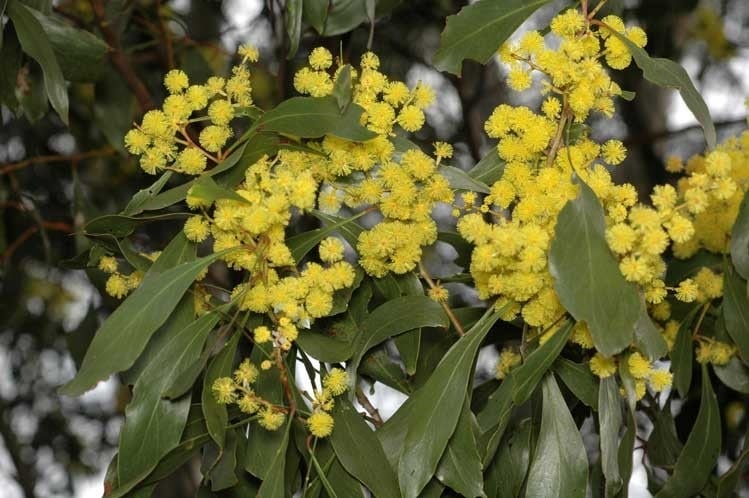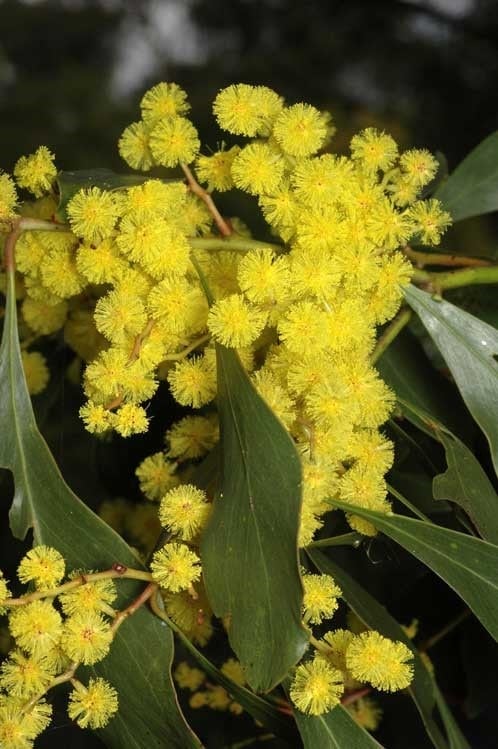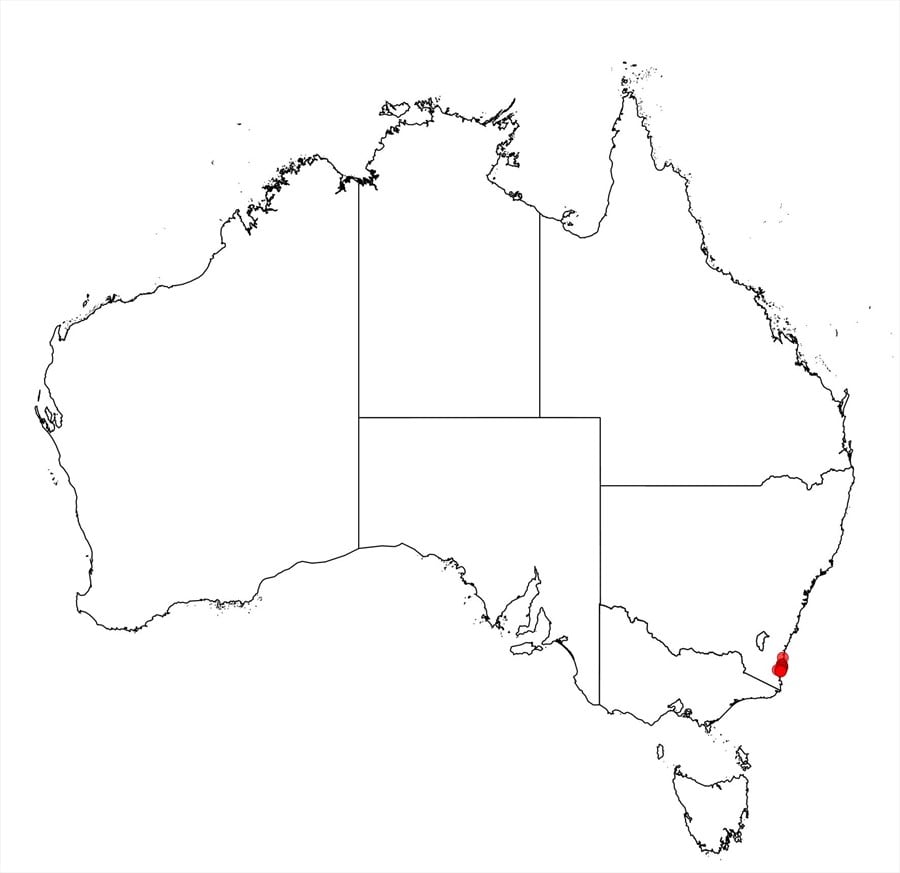Acacia pedina Kodela & Tame
WATTLE
Acacias of Australia
Family
Fabaceae
Distribution
Occurs near Bermagui S to near Tathra, N.S.W.
Description
Shrub or tree 2–5 (– 7) m high, often slender or spindly. Branchlets normally pruinose, glabrous. Phyllodes (adult) oblanceolate to obovate, ±straight to shallowly recurved, (5–) 6–10.5 (–12) cm long, (1.2–) 1.5–3.5 (–4.3) cm wide, often larger on juvenile plants, apices rounded to broadly obtuse, ±attenuated at base, thinly coriaceous, grey-green aging pruinose, glabrous, midrib prominent, finely penninerved; gland 1 (–2), the lowermost 10–30 mm above pulvinus, connected to midrib by a fine, oblique nerve. Inflorescences axillary and terminal racemes and/or panicles; raceme axes (1–) 3–7 (–9) cm long, glabrous; peduncles 2–4 (–5) mm long, glabrous; heads globular to ovoid, (25–) 30–40-flowered, yellow to golden; bracteoles peltate, the laminae subcircular, 0.3–0.5 mm diam., brown, fimbriolate. Flowers 5-merous; sepals united. Pods linear, to 12 cm long, 5–7.5 mm wide, firmly chartaceous to thinly coriaceous, glabrous. Seeds longitudinal, elliptic to oblong, 4–6 mm long, blackish brown to black; funicle folded once or twice; aril clavate.
Phenology
Flowers July.–Oct.
Habitat
Grows in clayey or sandy loams, in eucalypt open forest, on hillslopes, headlands and behind sand dunes on coast.
Specimens
N.S.W.: near Tanja, R.G.Coveny 5829 & J.Armstrong (A, AD, B, BRI, CANB, E, FRI, HO, K, MEL, MO, NE, NSW, NY, PE, PERTH, PRE, UNSW); Mumbulla State Forest, R.G.Coveny 7311 (AD, B, BRI, CANB, DNA, HO, K, MEL, MO, NE, NSW, NY, PE, PERTH, PRE, UNSW).
Notes
Closely related to A. pycnantha. Some specimens of A. pycnantha from eastern Vic. are similar to A. pedina in having <40 flowers per head, ±pruinose stems and similar adult phyllode morphology, but differ in having larger flower-heads (e.g. A.N.Rodd 4291, K, MEL, NSW). Further study of these specimens is required to assess status and relationships with A. pedina, fide P.G.Kodela & T.M.Tame (loc.cit.) for discussion.
Phyllodes variable with juvenile/intermediate phyllodes larger than those of the adult plants, namely, 8.5–16 cm long, 2.7–8 cm wide (with a gradual transition in size to the adult phyllodes), abruptly narrowed to obtuse or sometimes emarginate apex, with ±cuneate base and bluish- to brownish-green.
FOA Reference
Data derived from Flora of Australia Volumes 11A (2001), 11B (2001) and 12 (1998), products of ABRS, ©Commonwealth of Australia
Author
P.G.Kodela, B.R.Maslin
This identification key and fact sheets are available as a mobile application:
URL: https://apps.lucidcentral.org/wattle/
© Copyright 2018. All rights reserved.









